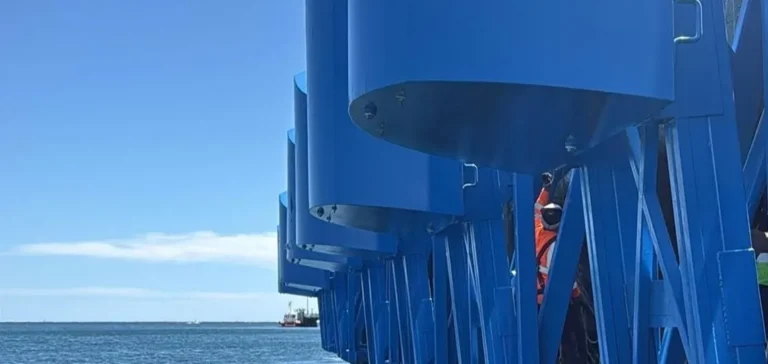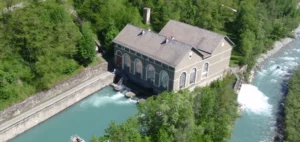The Swedish-Israeli group Eco Wave Power Global AB (publ) has completed the installation of floaters for its first wave energy pilot project in the United States, located at the Port of Los Angeles. This milestone comes as the company continues preparations for the official commissioning of the facility scheduled for September. The project aims to demonstrate the viability of Eco Wave Power’s patented technology under real marine conditions, leveraging existing coastal infrastructure.
Technical validation and local collaboration
The Los Angeles site will serve both as a technology showcase and a testing platform, conducting studies on the environmental impact and the durability of materials used for the floaters. Eco Wave Power also seeks to leverage this pilot to strengthen its experience with American permitting and compliance procedures, working closely with the U.S. Army Corps of Engineers and local port authorities.
The manufacturing of the floaters was entrusted to All-Ways Metal, a California-based woman-owned company, while installation was carried out by C&S Welding Inc., an industrial and marine services company recognised for its coastal infrastructure expertise. This local collaboration validates the industrial value chain on American soil and integrates the specificities of the local market.
Modular technology and deployment ambitions
The deployed system relies on floaters mounted on existing marine structures. The movement of the waves is converted into electricity by a land-based conversion unit. According to the company, this modular and low-maintenance approach is designed to adapt to various port and coastal environments while minimising disruptions to local ecosystems.
The pilot facility is hosted by AltaSea at the Port of Los Angeles and is supported by Shell’s Marine Renewable programme. The findings from this pilot will serve to optimise future commercial deployments, particularly in terms of durability testing, regulatory adaptation and training of local technical partners.
An expanding international pipeline
Eco Wave Power is already planning other projects outside the United States, with developments announced in Portugal, Taiwan and India, representing a global portfolio of 404.7 MW. The company is also continuing its activities in Israel, where it operates the first wave energy power station connected to the national grid. It receives support from several international institutions, including the European Union through the Regional Development Fund, Innovate UK and the Horizon 2020 programme.
The company’s outlook remains focused on the implementation of wave-powered energy solutions, supported by a strategy of partnerships and integration into new markets.






















